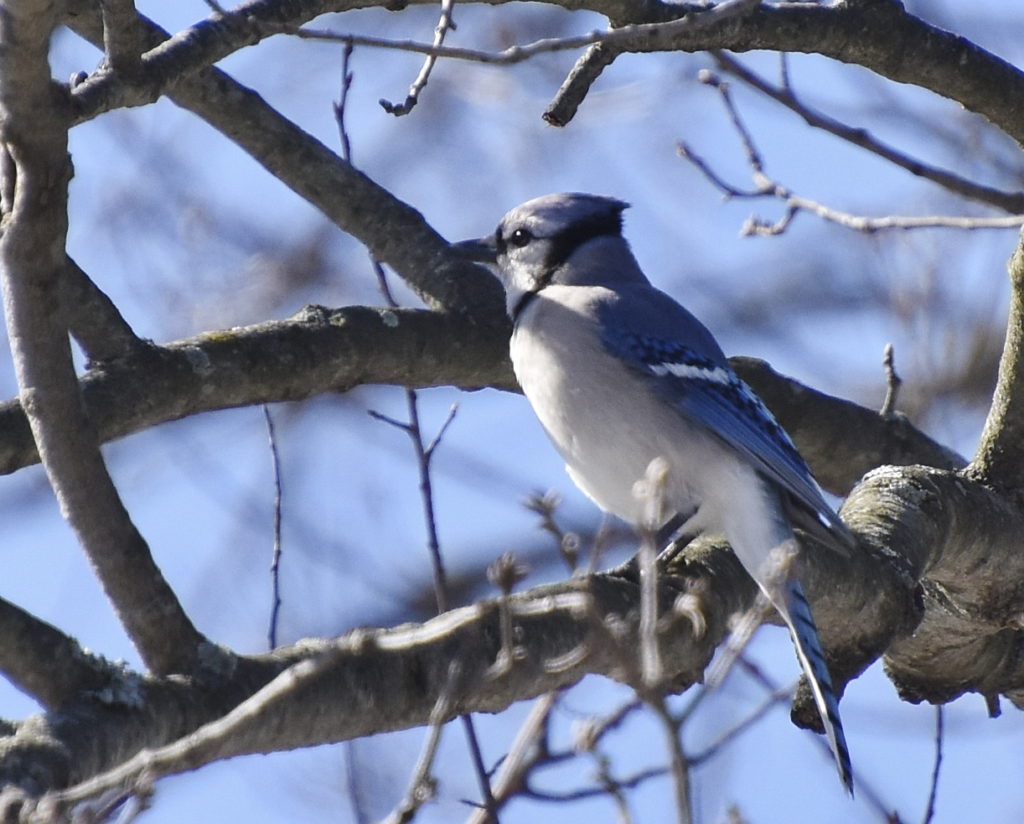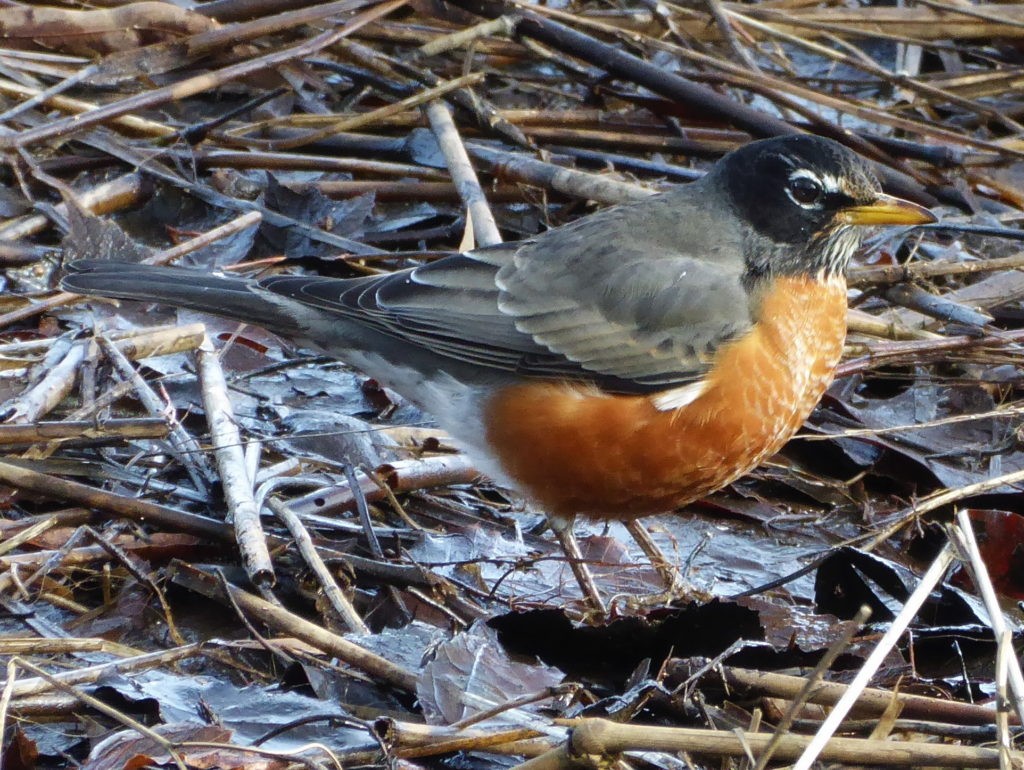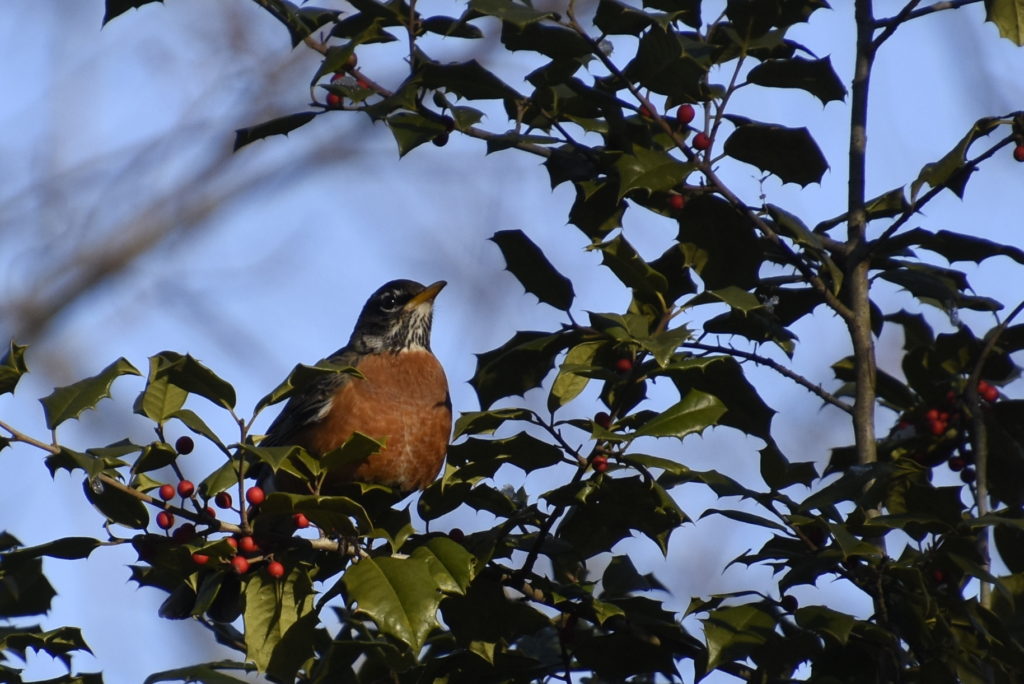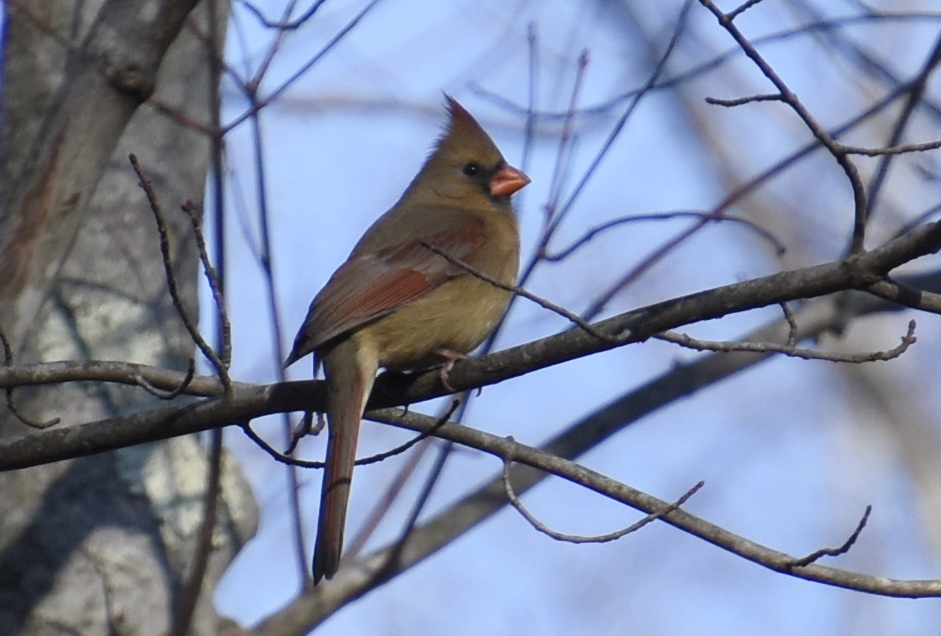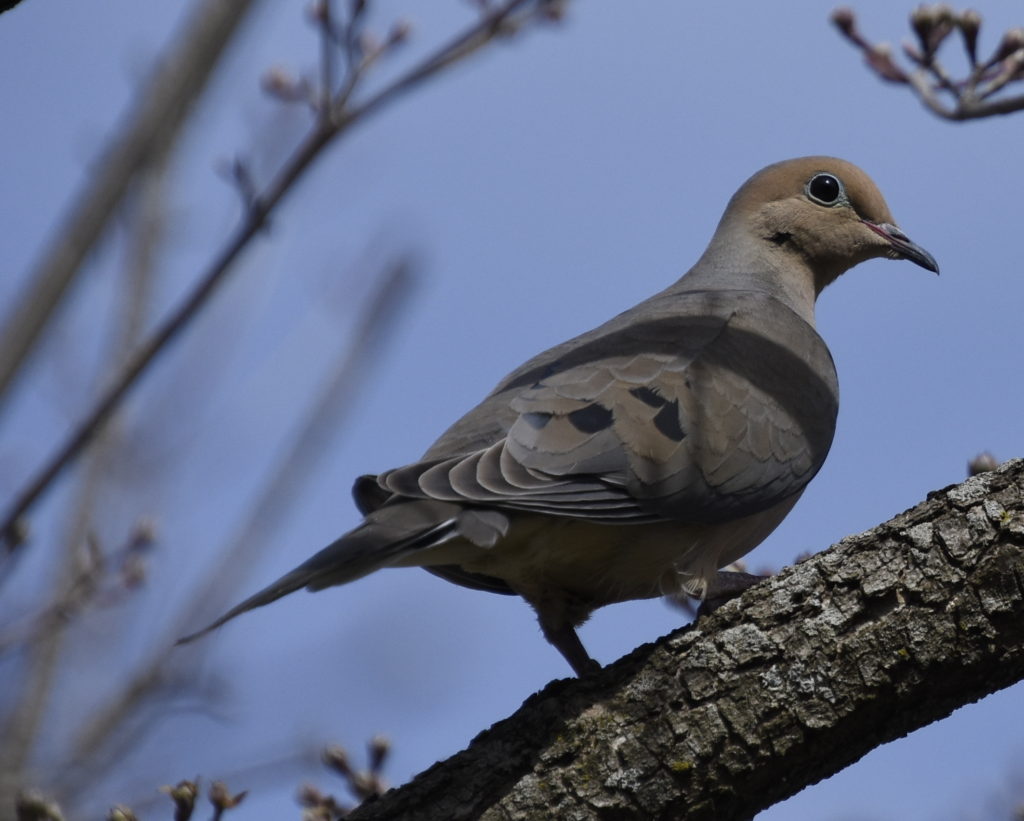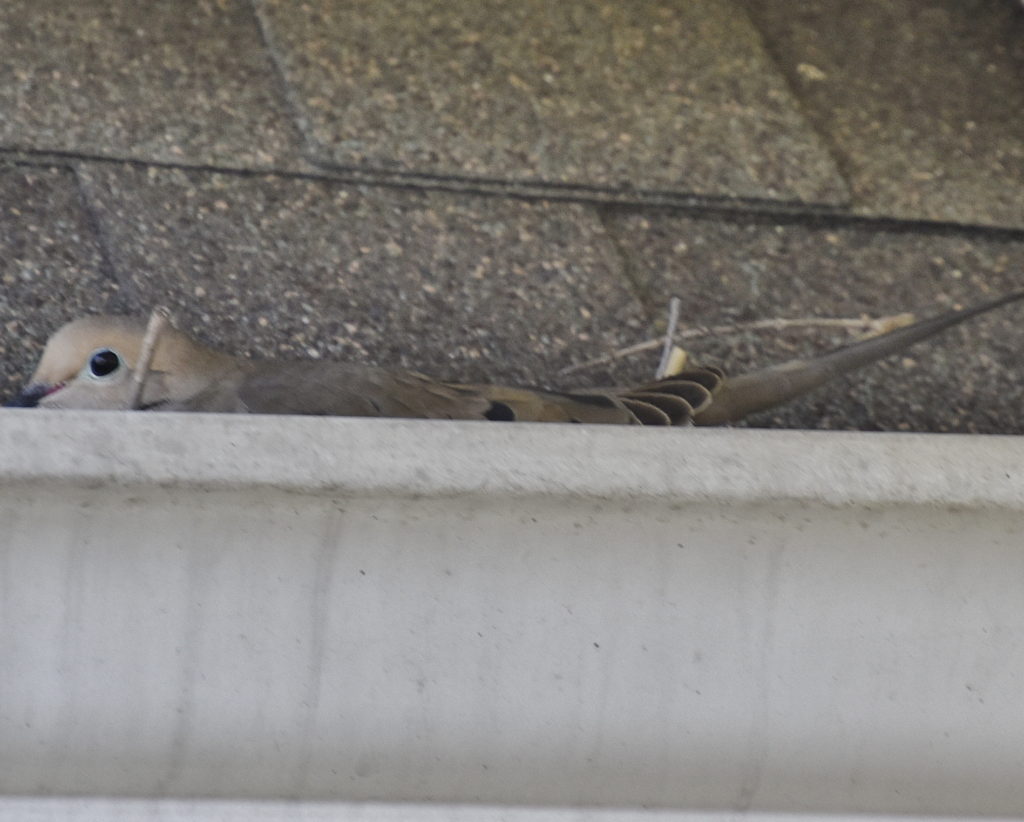Seen any good birds?
When a birder encounters a kindred soul she is almost guaranteed to be greeted with “Seen any good birds?” The subtext is that there are birds worth seeing because they are not encountered on a regular basis. The letdown comes when the response is “just the usuals”. We are so used to seeing certain birds that we rarely give them more than a cursory glance and move on in search of a “better” bird with the ultimate goal of adding a new bird to our life list. However, in reality there are no “bad” birds. All birds are worth seeing and getting to know. Very often you may pick out a detail or two that you might have overlooked before, or you may notice some interesting behavioral pattern that is new to you. Think of these commoners as “comfort food.” They may not be a rare delicacy, but they do provide the satisfaction of your favorite meal.
There are quite a few common birds we can expect to encounter on our campus, but four are almost guaranteed to be seen on a regular basis: American Robin, Northern Cardinal, Blue Jay and Mourning Dove. They are all year round residents, come to feeders during the winter, have distinctive vocalizations and have easily identifiable visible characteristics.
The American Robin is a member of the Thrush family and has a distinctive orange-red chest, gray back, conspicuous white spots around the eye (almost forming a broken eye-ring) and a gray tail often with a conspicuous white spot in the trailing edge corners. There may also be a white throat or white streaks on the throat. The female has a similar but duller plumage and the juveniles are heavily spotted on the breast. They are found throughout the campus from open lawns, to edge shrubbery, woodland trails and poking around in the marsh. They are omnivorous, feeding on insects, worms, and berries (especially in the winter). Their voice is a rich caroling of notes that rise and fall in pitch. They are among the earliest singers in the dawn of spring and summer.
Probably the most unmistakable of birds is the male Northern Cardinal. It is our only red bird with a distinctive crest, large pinkish bill and black mask extending from the eye to the throat area. The female shares the similar crest and bill but lacks the mask and is much browner in color. Their voice is a very distinctive whistle — “cheer, cheer, cheer, purty, purty, purty.” Look for the male sitting high up on a branch belting out his song. When not singing his presence can be detected by a metallic “chip” or “chink.” Cardinals tend to congregate in small flocks, probably families, and it is very common see one fly out of a shrub followed moments later by its mate. Like Robins, cardinals too are omnivorous and are regular feeder visitors during the winter months.
The Jays are members of the Crow family, and like their cousins they are noisy and aggressive birds, often harassing predators like hawks and owls. Like the Cardinal, the Blue Jay also has a distinctive crest, and also congregates in small flocks during the day. There are several closely related Jays in North America, of which Blue Jay is the most wide-ranging, extending from the east coast to the Great Plains and north into the prairie provinces of Canada. Our Jay is dull blue on the back and bright blue on the wings and tail, with white wing bars and white tail tips. Another distinctive mark is a black necklace or collar. The Blue Jay is commonly throughout the campus and meadow, on the woodland trails, and at feeders. It is fond of acorns and beechnuts, and our woodland area offers them a good supply. Their diet also includes insects, small rodents and carrion.
You have probably heard the mournful cooing of the Mourning Doves around the campus, and have probably seen them perching on the crests of roofs either singly or in small groups. They wear a costume of grayish-pink on the breast and under parts, with “dove gray” wings with black dots. The tail is long with white dots along the edges. If you get close you will see a bright blue ring around the eye. Mourning Doves are prolific breeders, capable of raising up to six broods per season, more than any other of our native birds. They eat almost exclusively a seed diet. Other than our bird-feeders, they can be found along the woodland trails, perimeter path and meadow.
Photographs and text by Robert Koch

